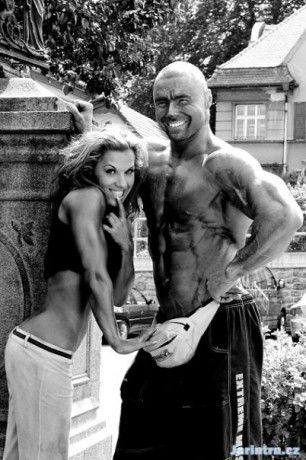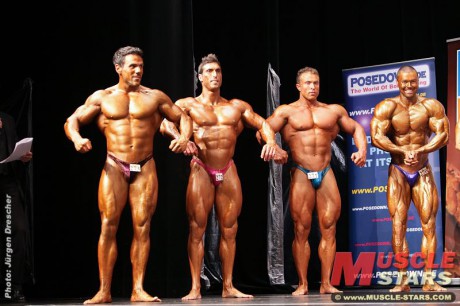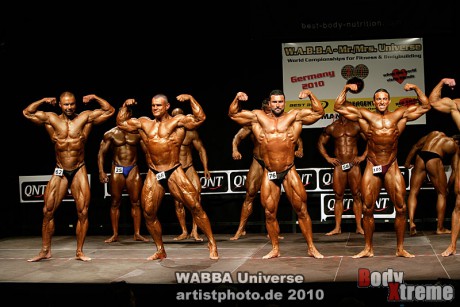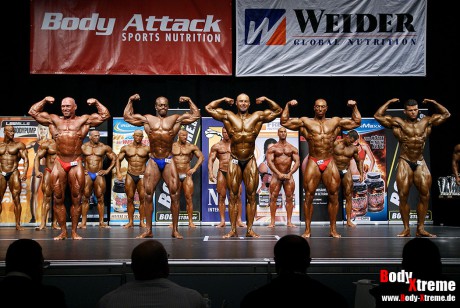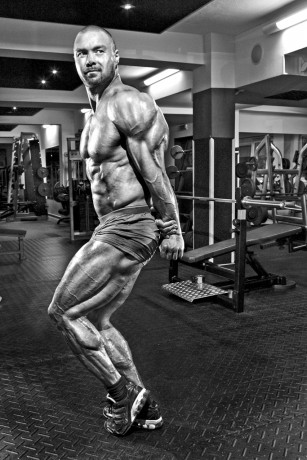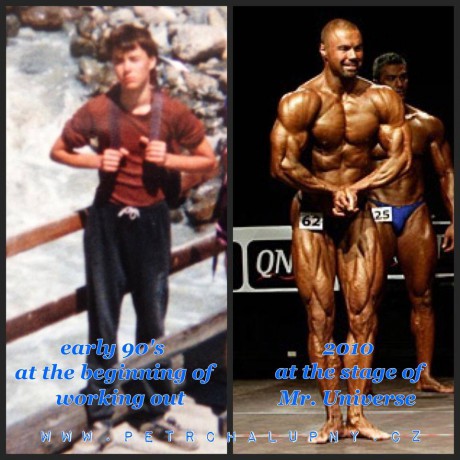The load
I greet you all and as promised, here is an article about the load size.
First of all I would like to emphasize that whether you are training for any reason, the burden should never negatively affect your training technique. You should always exercise purely technicaly and have the weight under control. Any cheating should be used as an even bigger load of the trained parts, not to lighten the trained part by transferring the load elsewhere.
In previous articles, I advised the beginners to use light weights enough to get mastered a good exercise technique. I advised reps in the range of approximately 12 - 15 reps and do not go to a failure. So let’s assume that the technique is already mastered, whether you exercise any length of time. And now there is the question „what with the load size"?
First, you need to be clear about what's your training’s purpose and then the size of the load depends on that. We can divide it on the strength development, development of muscle mass, endurance development and fat burning. Let’s go now through each of these points:
1. strength development:
Muscle consists of muscle fibers, but there will be more crucial notion motor unit for us. Each motor unit consists of a number of muscle fibers (4 - 400) and a single nerve fiber, which gives the certain muscle fibers commands from the central nervous system. Each motor unit is based on the binary system, this means that either involve all muscle fibers at once, or none, without exception. The muscle consists of several hundred to thousands of motor units and its power is increased in two ways. On the one hand by increasing frequency command to contraction, on the other hand by increasing the number of simultaneously connected motor units (while maximally may be involved only about 70 - 80%, they can never be engaged all at once). And this is the essence of strength training, enhancement of both of these factors. In practise, this is implemented using submaximal weights, it means using loads in the range of about 85 - 95% maximums for one repetition, 100% load goes only exceptionally. 100% one-rep max is the weight with which you can do with all strength only one repetition. In practise, such training looks for example as if you train deadlift, your one-rep maximum is 100 kg, and after sufficient warm-up you will perform a series of 85 to 95kg, which are weights that you should be able to do about 2-5 reps per set.
2.increase of the muscle mass:
If your goal is primarly muscle growth, you need to do differently. When strength training is mainly to develop intramuscular and intermuscular coordination, development of its volume is only a side effect. If a particular muscle should grow, it must during the training occur to maximize the catabolism (burning, loss of muscle proteins), which subsequently causes (assuming that the necessary conditions such as proper nutrition and plenty of quality rest are met) anabolism (building new muscle proteins), which first compares what was the lost during the training and only then adds „something extra”. The greater catabolism during the actual workout, the greater the subsequent anabolism (but for the real fulfillment the above conditions need to be met - an the muscle must have something to grow from and it grows while resting). Volume training should therefore contain a little less muscle tension than strength training, but this voltage should last longer. It means to use loads in the range of 65 - 80% of one-rep max, which corresponds to about 6 - 12 repetitions to the failure in the series. If I used the previous example, then the dumbbell in the job series had 65 to 80 kg.
3. endurance development:
Here it is all about the greatest depletion of muscle energy stores, which in turn requires an even longer period of tension than of the volume training and this voltage course must be proportionally smaller. In practise, this means using the load approximately to 60% max for one - rep, which corresponds to the number of repetitions - about 15times and more.
4. fat burning:
Since the essence of burning fat is to give more energy than you receive, then such training should logically look like training for the endurance development. To burn as much energy, you should do a lot of series with a large number of repetitions with short breaks in between them. But there is one „but”: since you currently have a limited amount of nutrients, there is a danger that such training burns a lot of muscle mass too, which is certainly not good. Some ladies have a totally irrational fear that exercising might make them look like bodybuilders and now you could say that you wouldn't mind burning some of those muscles... and if this is your case, think deliberately - what primarily shapes the body? Slightly "muscular" body definitely looks much better than skinny body, with some health aspects, not even mentioning such things as the ability to burn fat.. So as a prevention or at least as a reduce of the potential loss of the muscle tissue during this type of training, is very appropriate to include a smaller amount of batches with a bigger load and fewer repetitions, like in the volume training. Another interesting form of training to promote fat burning can be also the circuit training, but more on that some other time.
So that's all for today, I tried my best to write it so that it was understandable and also in a broader context. I hope that I did it. If anything, please let me know. To the next time guys…
Translated by Martina Marková
